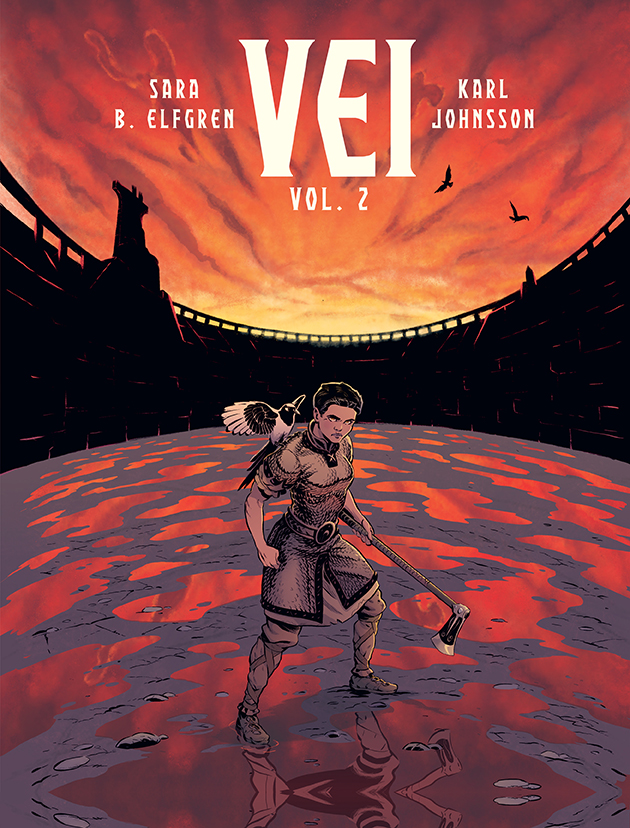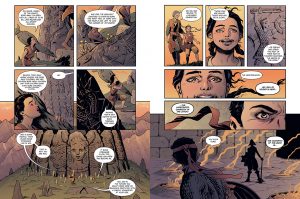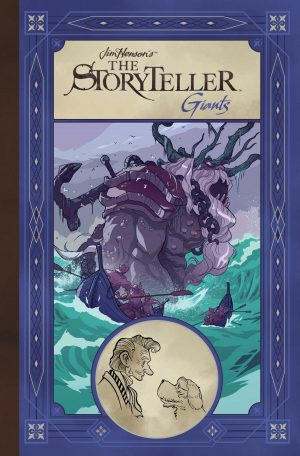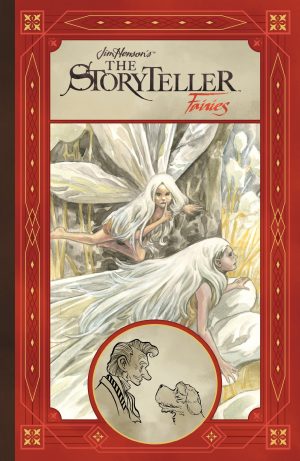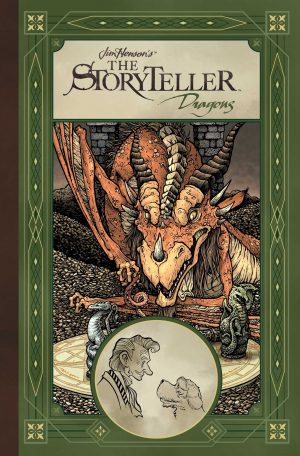Review by Karl Verhoven
Vei’s introduction in Vol. 1 proved there is considerable life beyond Thor when it comes to extrapolation of the ancient Norse gods, and this concluding volume is equally enthralling.
Much background has already been supplied, and Sara B. Elfgren adds a little more near the start, explaining how some humans living near the Jotun giants have greater strength and stamina. Several generations apart, champions chosen by the giants of Jotunheim compete in a tournament against the Norse gods, led by Odin. The Meistarileiker substitutes for a war neither side can win, and which would ravage their lands. She’s had some help, but over the opening rounds Vei has proved a warrior the likes of which the Meistarileiker hasn’t seen for a long time, and we’ve had the revelation that Odin’s crew always win because he cheats. Can Vei overcome those odds? Well, Elfgren supplies one hell of a gut punch in revealing who Vei’s next opponent will be.
They’re so weaved into Vei that the complexity of Elfgren’s musings drift along with it, and it can pass readers by that substituting contemporary methods of worship for Odin and the Jotun supplies a very different perspective. Loki is well used, here in a gender fluid incarnation, offering help while sowing doubt. “One day neither humans, Jotun, or Æsir will walk the Earth”, they tell Vei’s human companion Dal, “and even the stars will fade. I find some comfort in that”. Such moments of yearning fatalism surprise, if reinforcing a Nordic stereotype. Elfgren also includes political intrigue along with heartbreak and violence, all skilfully brought to life by Karl Johnsson whose mastery of emotion works alongside the thrills. Because giants need giant premises there’s plenty of working with scale, a centrepiece being a magnificent illustration of an open bridge joining two parts of the giants’ castle, ornately rendered in the pouring rain. It takes some study to realise Johnsson’s also worked in Vei making her way across unobtrusively, a sequence continued with the following spread’s internal progress. Johnsson employs great effort in passing decoration, being responsible for the colour adding to the whimsy of the Northern Lights accompanying an interesting conversation or some remarkable glowing red runes.
Readers familiar with Norse myths will see those legends deftly extrapolated, the personalities intact, while readers whose knowledge comes from Marvel’s Thor will discover some common ground, although entirely without hammer flinging. A lack of sentimentality applies, and uncertainty is maintained regarding the various players and their motivations, about whether Vei is doing the right thing, and how everything will play out. It’s very satisfactory all the way to a suitably cinematic finale that’s been cleverly foreshadowed. There’s even a neat epilogue chapter.
Over two volumes Vei is an epic story to treasure. The one misjudgement is the inclusion of sex scenes not really necessary to the story. It perhaps indicates a more enlightened view of a natural process in Northern Europe, but in English language territories it means Vei misses out on an all-ages audience that would otherwise appreciate the grand adventure.
